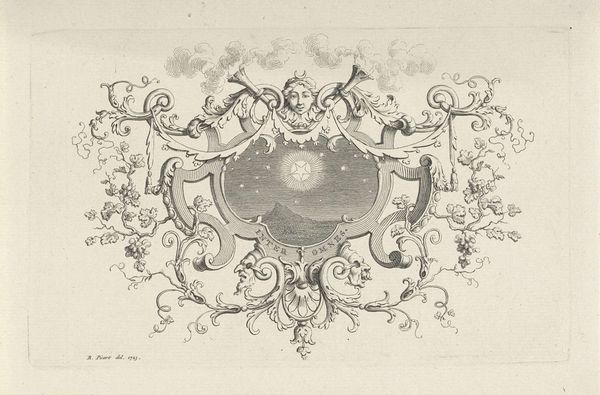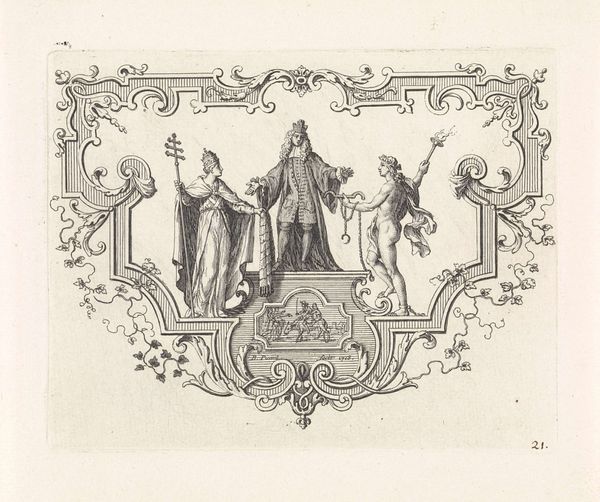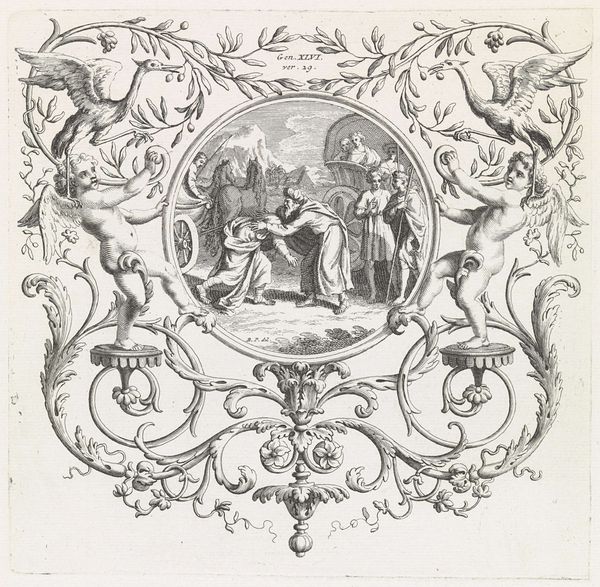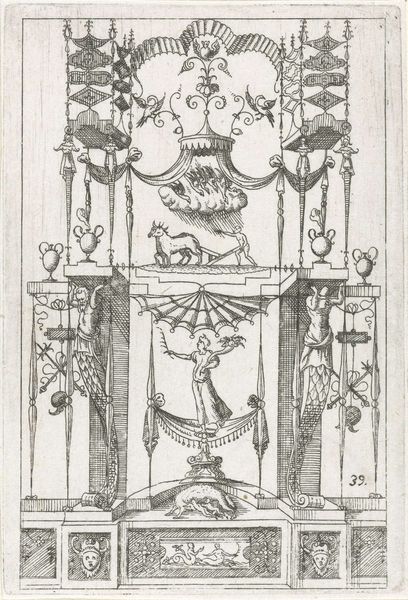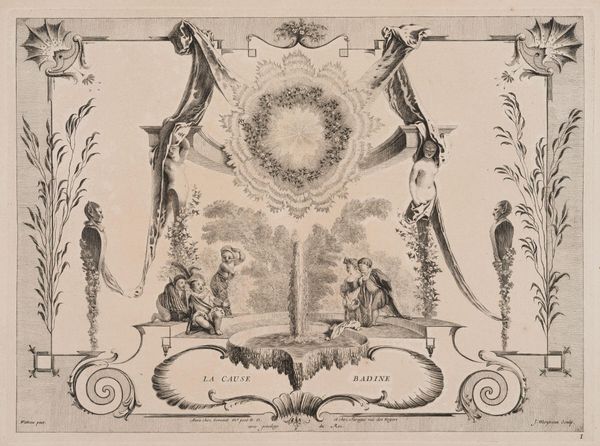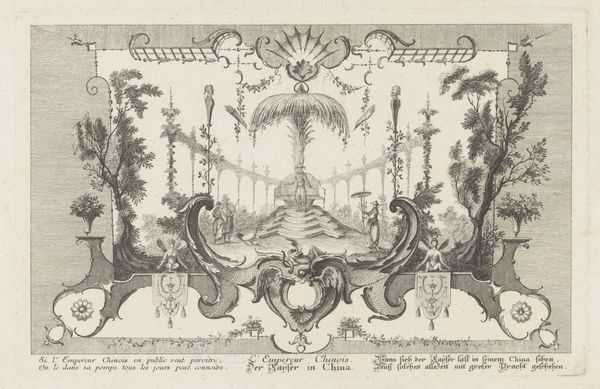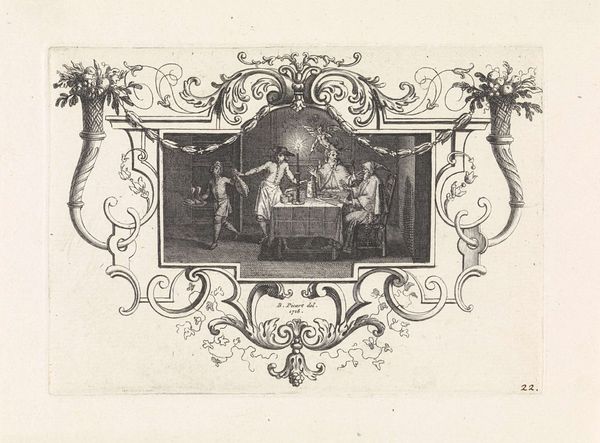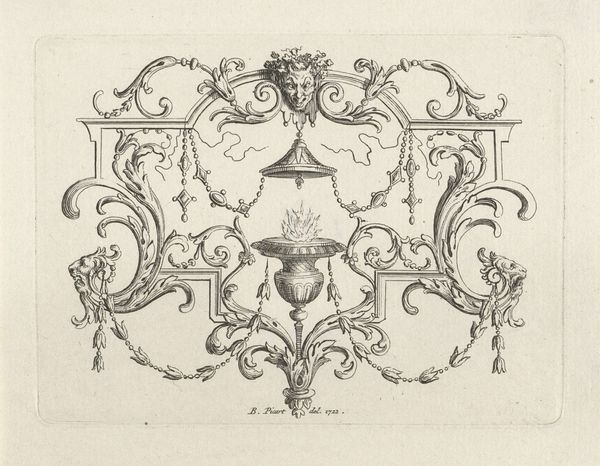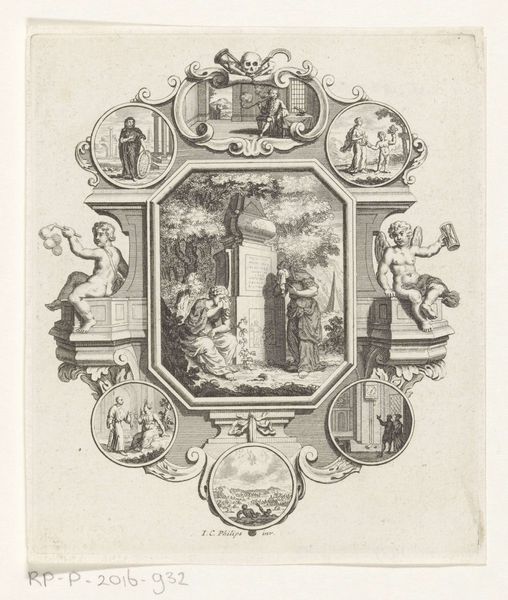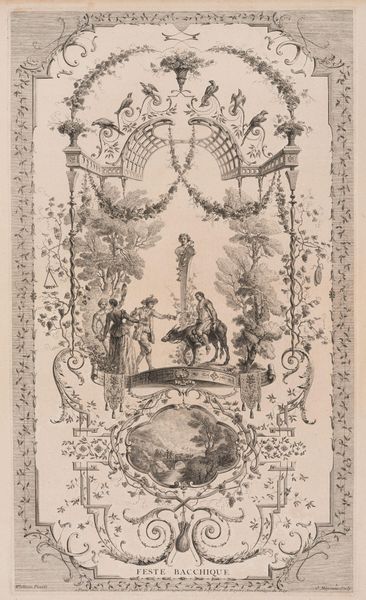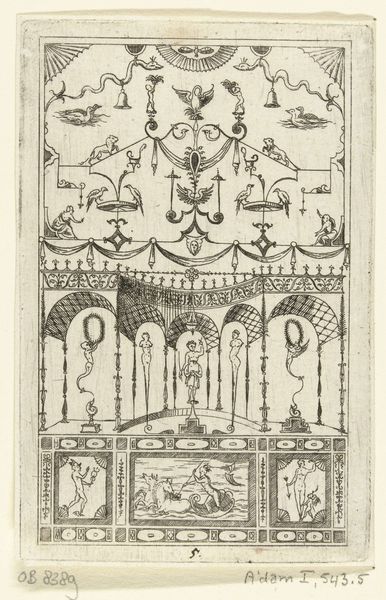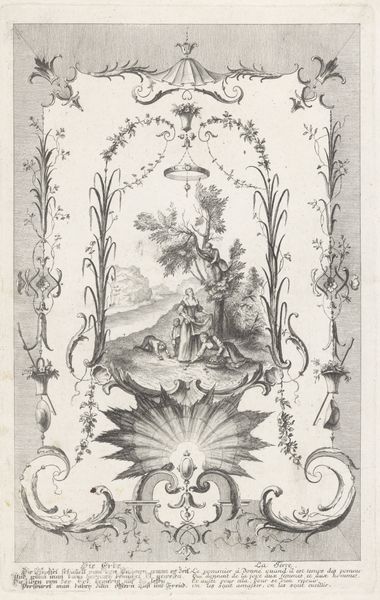
Dimensions: height 119 mm, width 137 mm
Copyright: Rijks Museum: Open Domain
Editor: This is “Tetragram en zon en maan in ornamentele omlijsting,” from 1718, by Bernard Picart. It's an intaglio print, full of animals and celestial imagery. The composition is just so bizarre, almost dreamlike. What do you make of this peculiar work? Curator: "Peculiar" is a good word for it! Its symbolism feels deeply rooted in the social anxieties of its time. Consider the historical context: the Enlightenment was dawning, yet superstition and esoteric beliefs still held sway. These seemingly disparate elements create a tension reflected in the artwork's unusual arrangement of natural and supernatural figures. Editor: I see what you mean. There’s the sun and what I assume is the moon. Plus the Hebrew text. How does that fit in? Curator: The Tetragrammaton, the Hebrew name of God, positioned alongside celestial bodies and a menagerie of creatures, suggests a hierarchical cosmos where everything is interconnected but also rigidly defined. What statement do you think Picart is making about faith and the natural order during this pivotal moment in history? Does it affirm traditional beliefs, or subtly critique them? Editor: It’s hard to tell. I guess it’s a commentary on the period's worldview, right? Curator: Precisely! It’s a snapshot of a society grappling with emerging scientific thought, while still clinging to older paradigms. Perhaps even revealing an intersection of political stability against religious beliefs. Editor: So much more than just a quirky illustration. This print becomes a reflection of cultural identity and change! Curator: Yes! It serves as a visual document of its era’s struggle to reconcile the known world with the mysteries of the divine.
Comments
No comments
Be the first to comment and join the conversation on the ultimate creative platform.
